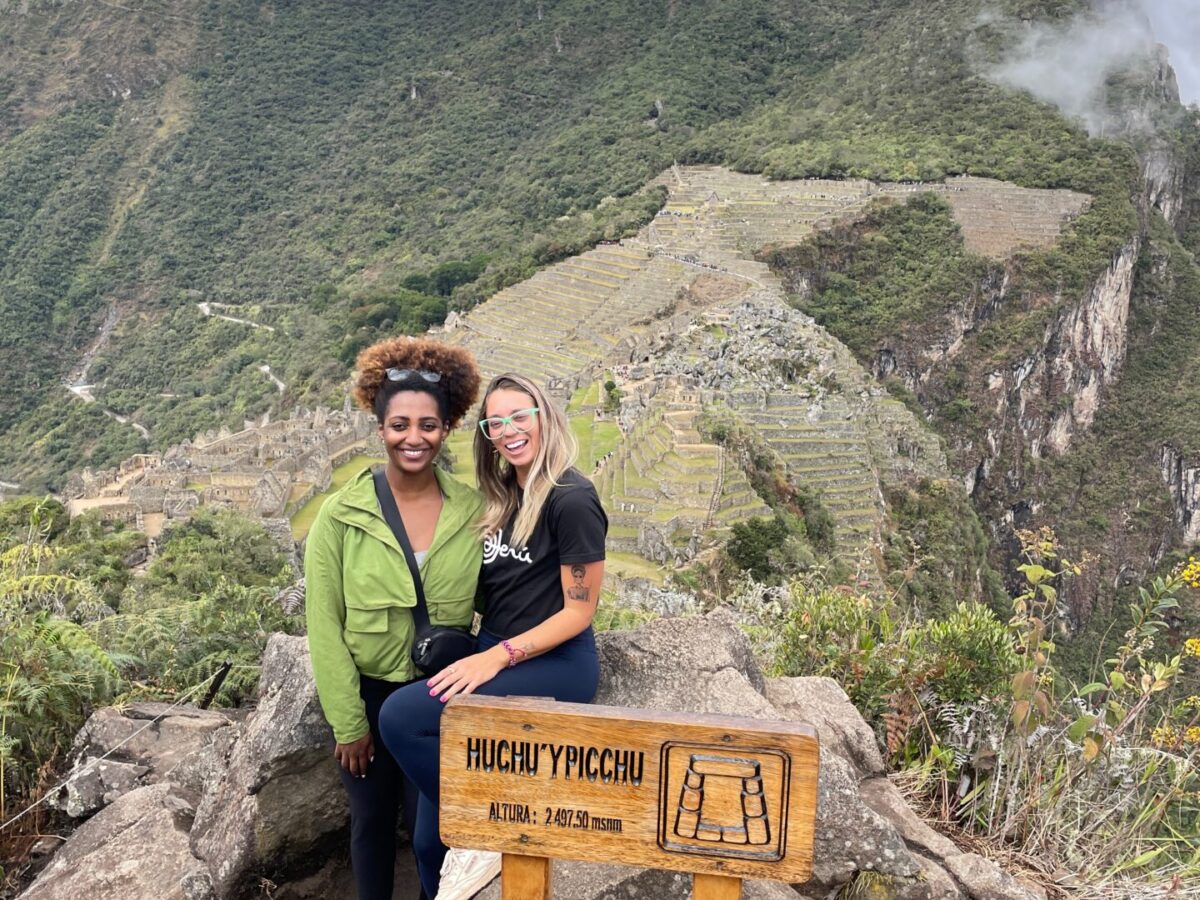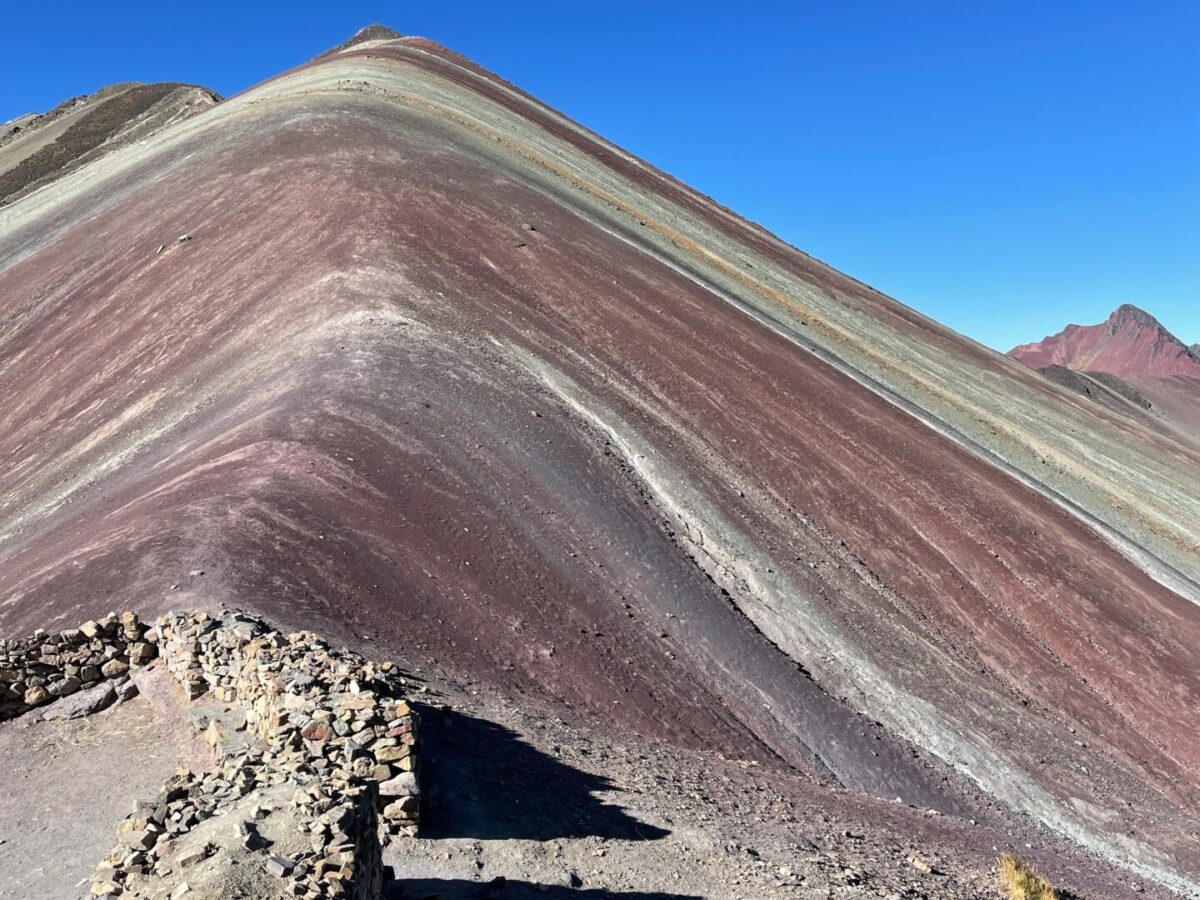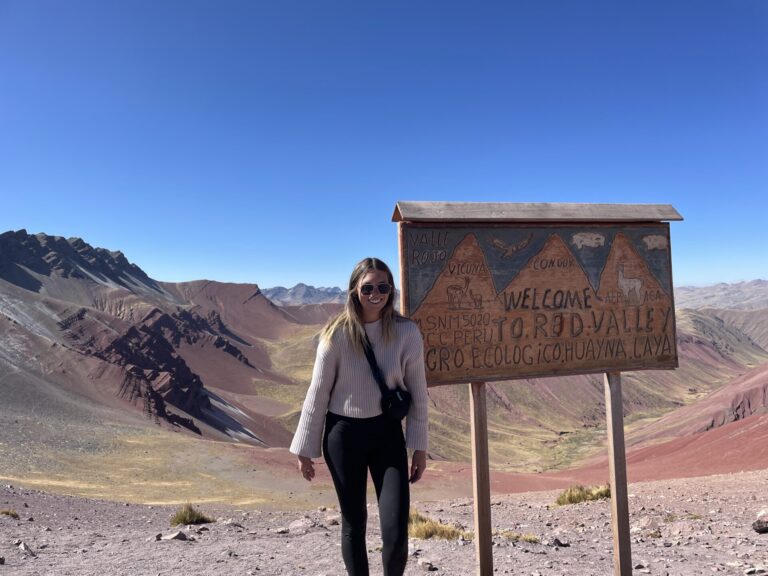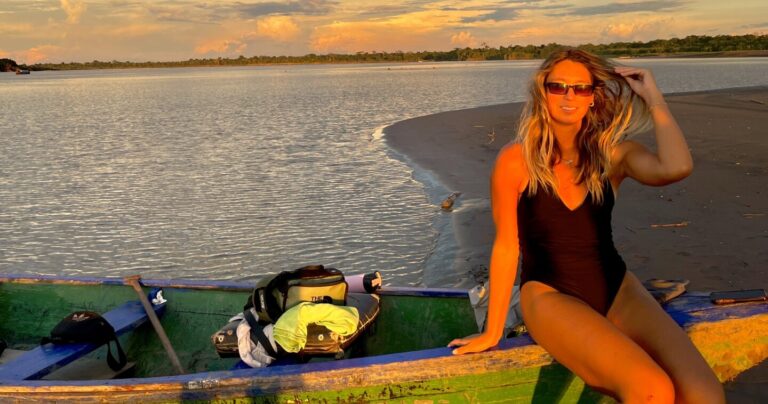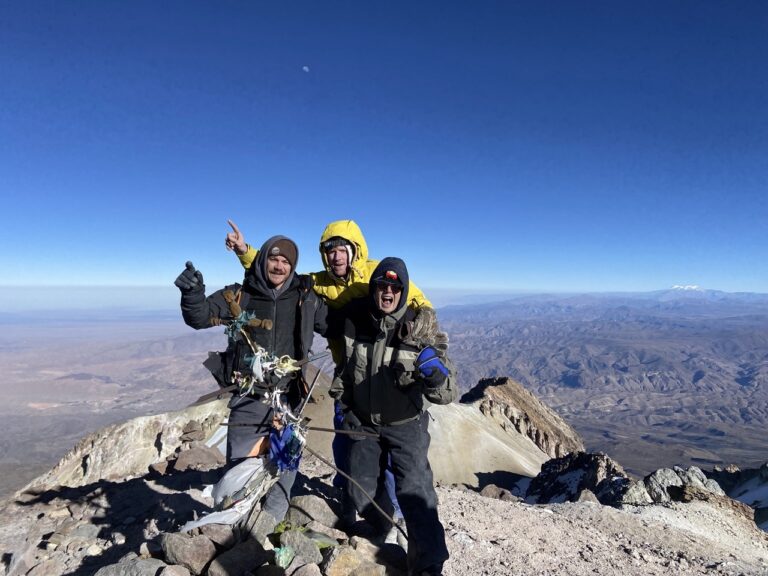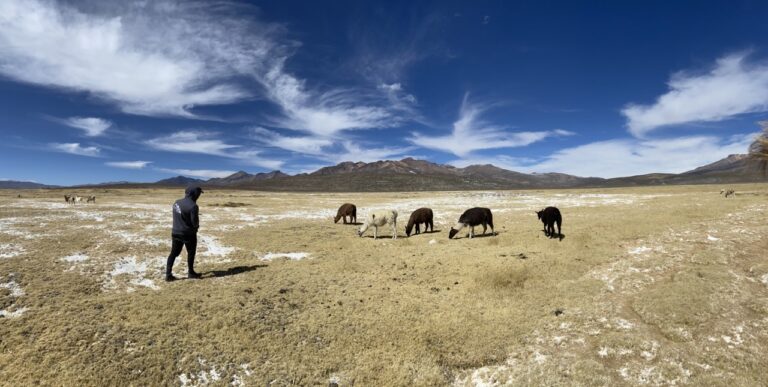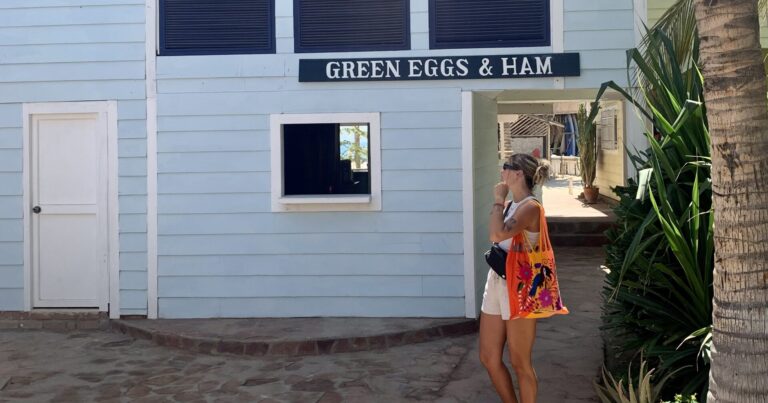How to Get to Machu Picchu: A Firsthand Guide from Someone Who’s Been There
Machu Picchu is for sure one of the best things I’ve done in South America, easily a highlight of my time in Peru. I’ve visited twice now, and honestly, my second trip was just as incredible as the first, even though both were completely different experiences.
Figuring out how to get to Machu Picchu is a big deal because there are so many ways to do it. I’ve heard people debating the best route nonstop—should you hike? If so, which trek? Or should you skip the hike altogether and just take the train? There’s no single “best” way, but it’s definitely something you’ll want to research ahead of time when planning your Peru trip.
I just got back from my second visit to Machu Picchu, and after trying different ways to get there, I’m breaking it all down. This isn’t about the best or ultimate way to visit Machu Picchu because, honestly, they all have their pros and cons. Instead, this is a comparison—my honest thoughts on each option and what I liked (or didn’t) about them. So here we go, let’s talk about how to get to Machu Picchu.
In a Rush? Here Are Our Favorite Hotels in Cusco, Peru
⭐️⭐️⭐️ Palacio del Inka – Click here for rates & availability
⭐️⭐️ Costa Del Sol Cusco – Click here for rates & availability
⭐️ Pariwana Hostel Cusco – Click here for rates & availability
How to Get to Machu Picchu Peru
As far as I know, there are three main ways to get to Machu Picchu, and I’ve done two of them so far.
1. The Salkantay Trek – This is a five-day hike to Aguas Calientes and Machu Picchu. I did this on my first trip to Peru, and while it’s absolutely doable for anyone with a decent fitness level, it’s definitely a challenge—especially on day two when you hit 4,600m crossing a mountain pass. But if you’re up for an adventure, it’s incredible.
2. The Inca Trail – Probably the most famous option (though I haven’t done it myself). This trek follows the actual path the Incas used to reach Machu Picchu, making it a more historical route. It’s shorter and easier than the Salkantay Trek but also more popular, meaning you’ll need to book it well in advance.
3. Taking the Train – If you want to skip the hiking altogether, the train is the way to go. It’s the most comfortable and easiest option, perfect for those short on time or not into trekking. I took the train on my second trip, and honestly, it’s a super laid-back and scenic way to reach Machu Picchu. Highly recommend.

💡If you want to know more about my journey in Peru, check out my Peru itinerary.
How to Visit Machu Picchu via the Salkantay Trek
Alright, let’s get into it. On my first trip to Peru (and Machu Picchu) in 2022, I did the Salkantay Trek. I was solo backpacking South America, meaning everything I did was spontaneous, terribly planned, but somehow well-executed—pretty much my usual style when traveling solo.
I arrived in Cusco, met up with a friend, and we booked the trek last minute through a local agency. Not the best price, not the best Machu Picchu ticket, but still an amazing experience. We had to wait a few days for availability, which worked out since we got to explore Cusco. (If you’re on a strict timeline, book everything way in advance. Don’t wing it like I did.)
The Salkantay Trek Itself
Once we were set, a van picked us up from Cusco and drove a few hours to the starting point. From there, it was four days of hiking through mountain passes, villages, and jungle, with the fifth day in Aguas Calientes before heading up to Machu Picchu.
Let me be clear—this trek isn’t luxurious. You’re camping in tents, dealing with altitude headaches, and hiking up to 20km per day – 74 kilometers in total (46 miles). It’s exhausting, sweaty, and cold at night. But it’s also incredible. If you have a decent fitness level, I highly recommend it. It’s actually more challenging than the Inca Trail.

How Much Does the Salkantay Trek Cost?
Like I said before—book in advance if you’re short on time. But if you have flexibility, book in person in Cusco through a local agency to save a ton of money.
- What I paid in 2022 (last-minute, in Cusco): ~$200 USD
Included: food, camping gear, guide, porter, Aguas Calientes accommodation - Booking online today: $500–$1000 USD (insane)
- 2025 Update: Prices have skyrocketed due to demand. Expect to pay $400–$800+ now, depending on where you book. Same for the Inca Trail—it’s getting more expensive every year.
Important: Your Machu Picchu ticket is separate, so either book it yourself or confirm with your agency that it’s included. Make sure your time slot aligns with your hike!
💡Book the Salkantay Trek Online
What to Pack for the Salkantay Trek
Don’t stress too much—your tour company will give you a full packing list. But based on my experience, here’s what you actually need:
✅ Hiking boots (I did it in Vans… don’t be like me)
✅ Warm clothes (layers, proper jacket, long pants, short pants, beanie)
✅ Rain gear (poncho or rain jacket—weather is unpredictable)
✅ Toiletries (there aren’t many showers)
✅ Power bank (no outlets along the way)
✅ Snacks (granola bars, extra water, or a Lifestraw bottle to refill at streams)
Don’t overpack. You’re carrying everything, and trust me, you don’t need clean clothes every day. The lighter your backpack, the better.

How to Travel to Machu Picchu via the Inca Trail
Alright, next up—the Inca Trail. Unlike the other two options I’ve done, this is the one I haven’t personally hiked, but I’ve met plenty of people who have.
This is the most famous trek to Machu Picchu, and unlike the Salkantay Trek (which you can book last minute), the Inca Trail requires booking months in advance. Spots are limited, and demand is always high. The trail is 26 miles (42 km) long and usually takes four days to complete. It’s also the most regulated of all the treks, so you can’t just show up and go.
What to Expect on the Inca Trail
The trek takes you through ancient ruins, cloud forests, and mountain passes, including the infamous Dead Woman’s Pass at 13,800 feet (4,215 meters)—the highest and most challenging part of the trail.
You’ll be camping at designated sites along the way, and since this is such a well-known trek, expect to hike with a group. Great for meeting people, but don’t expect much solitude compared to Salkantay.
The biggest highlight? Arriving at Machu Picchu through the Sun Gate (Intipunku) at sunrise. Seeing Machu Picchu from that viewpoint after four days of trekking is an unreal experience.
1-Day Inca Trail Hike
If you’re short on time (or don’t want to commit to four days), there’s also a 1-day version of the Inca Trail. This lets you hike the last six hours of the trail and enter Machu Picchu through the Sun Gate, skipping the earlier parts.
It’s not the full experience, but if you still want to hike and get that iconic Sun Gate entrance, it’s a solid alternative. Downside? It’s ridiculously overpriced—expect to pay $400+ for this one-day hike. Booking in Cusco might be cheaper, but I wouldn’t count on it.
How Much Does the Inca Trail Cost?
Because it’s the most famous trek, the Inca Trail is way more expensive than Salkantay.
- Online prices: $700–$1300 (wild)
- Booking in Cusco: Around $350 (if there’s availability, which is rare)
Honestly, considering it’s shorter, easier, and mainly famous for the name, I don’t see why you’d pay double the price just to say you did the Inca Trail instead of Salkantay. But hey, if it’s your dream hike—go for it.
What to Pack for the Inca Trail
Packing for the Inca Trail is pretty much the same as for the Salkantay Trek:
✅ Hiking boots (comfortable and broken-in)
✅ Breathable layers (weather changes fast)
✅ Waterproof jacket or poncho (rain is unpredictable)
✅ Daypack (for essentials)
✅ Plenty of water (or a Lifestraw bottle)
✅ Sunscreen & hat (the sun is brutal)
✅ Flashlight or headlamp (for early hikes)
✅ Snacks (energy bars help on long days)
Same rule applies—pack light. The less you carry, the better your hike.

How to Get to Machu Picchu by Train
Taking the train to Machu Picchu is honestly one of my favorite ways to get there. On my last trip to Peru, this is exactly what I did—I took the train from Cusco to Aguas Calientes and then hopped on the bus up to Machu Picchu. No hiking for me this time, guys—I just wasn’t feeling it!
How the Train to Machu Picchu Works
The train runs from Cusco to Aguas Calientes, with a quick stop in Ollantaytambo in the Sacred Valley to pick up more passengers. There are two train companies offering this service:
I went with Inca Rail, but honestly, I think both are pretty similar in terms of service.
Trains run all day, every day, with many departures early in the morning for those who want to visit Machu Picchu in a single day and head back. The journey takes 2 to 3 hours, depending on the departure time.
What the Train Ride to Machu Picchu is Like
If you’re picturing some basic, no-frills train ride—think again. I was actually surprised by how nice the trains were. I rode in Voyager Class (which is basically economy), and even that was super comfortable. They have 360-degree panoramic windows, a bar, and a restaurant where you can grab cocktails, beers, and snacks on the way to Machu Picchu—which, let’s be real, makes the journey way more fun.
Before getting off in Aguas Calientes, they let me peek inside the higher-class cabins, and wow… they were fancy.
- First Class – Lounge areas, fine dining, and full-on table service.
- Premium Class – A step up with even comfier seats and overhead glass windows for better views.
- Private Car – This is next-level—a private train car that’s basically your own traveling living room for your group.
If you’re on a honeymoon or special trip, this could be a splurge-worthy option.

How Much Does the Train to Machu Picchu Cost?
Prices vary depending on the class you choose, time of day, and season, but here’s a rough idea:
- Voyager Class (Economy) – Starts at $60 one-way. This is what I took, and honestly, it was more than fine!
- Premium Economy – Starts at $100 one-way. It’s a bit more spacious, has entertainment, and better window views, but to me, it doesn’t seem worth the upgrade.
- First Class – $200–$300 one-way. This is where you get lounge chairs, a three-course meal, and balcony access—fancy stuff.
You can also bundle your train ticket with the bus to Machu Picchu, entrance tickets, and a guide, which will increase the total cost. Here is the train schedule
My Thoughts on Taking the Train to Machu Picchu
Taking the train to Machu Picchu is a fantastic option. When I was in Cusco, I met plenty of people who said hiking is the only way to truly experience Machu Picchu. And while I get that, the train makes Machu Picchu accessible for those who don’t have the time or ability to hike. Plus, you can do it in serious style, making it perfect for a honeymoon or special occasion.
That said—if you’re even slightly into hiking, I’d always recommend hiking over the train. The trek gives you a huge sense of accomplishment and lets you experience Peru’s incredible landscapes in a way that a train ride just can’t match.
But if hiking isn’t for you, the train gets two thumbs up from me.

Can You Get to Machu Picchu by Car?
Short answer: No.
I’ve never tried this myself, but I’ve met a few overlanders in Cusco—people driving their own vehicles across South America—and even they couldn’t technically drive to Machu Picchu.
Why You Can’t Drive to Machu Picchu:
The main issue here is There are no roads leading to Aguas Calientes, the closest town to Machu Picchu. The only way to reach it is by train or on foot.
If you have your own car, you can drive as far as Hidroelectrica, a small town that serves as a starting point for some treks. But from there, you still have to hike about two hours to Aguas Calientes.
For anyone thinking about renting a car to get to Machu Picchu—it’s honestly not worth it. It’s way easier to just take the train from Cusco or Ollantaytambo to Aguas Calientes and then either walk or take the bus up to the site.
Is It Possible to Visit Machu Picchu in One Day?
Yes, you can visit Machu Picchu in one day, but whether you should depends on how much time and energy you’re willing to invest. If you’re short on time and just want to see the ruins, it’s absolutely doable. But if you want a more relaxed experience or plan to do any hiking, an overnight stay in Aguas Calientes is the better option.
The Fastest Way to Visit Machu Picchu in One Day:
The quickest way to get there is by train from Cusco or Ollantaytambo. Here’s how it works:
- Take an early morning train (5–7 AM) to Aguas Calientes.
- From Aguas Calientes, either take the bus (25 minutes) or hike up (1.5–2 hours) to the entrance.
- Spend a few hours exploring Machu Picchu.
- Head back to Aguas Calientes to catch an afternoon or evening train back to Cusco.
If you time everything right, you can leave Cusco at dawn and be back by nightfall.
What You’ll Miss When You do a 1 Day Machu Picchu Trip
While this is the fastest way to do it, you won’t have much time to enjoy Aguas Calientes or hike any of the extra trails inside Machu Picchu, like Huayna Picchu or Montaña Machu Picchu. It’s also a long, exhausting day—especially with all the early starts and transfers.
My Advice for a Day Trip to Machu Picchu
If you only have one day, it’s best to plan everything in advance, book your train tickets and Machu Picchu entry early, and go for the earliest possible train. One easy option is to book a train + Machu Picchu travel package on the Inca Rail website—this way, you won’t have to worry about matching your train arrival with your entry time. Just make sure you select the correct time slot for Machu Picchu so you can enter as soon as you arrive.
But if you have a little more time, staying overnight in Aguas Calientes makes the experience way better. You get to explore Machu Picchu at a more relaxed pace and can visit in the early morning or late afternoon, avoiding the worst of the midday crowds.

FAQs About How to Get to Machu Picchu
When is the best time to visit Machu Picchu?
The best time to visit Machu Picchu is during the dry season (April to October) when you’ll have clearer skies and better trekking conditions. However, this is also peak tourist season, so expect more crowds.
How long does it take to get to Machu Picchu from Cusco?
By train, it takes about 3.5 to 4 hours (including the bus from Aguas Calientes). If you’re hiking, it depends on the route—the Inca Trail takes 4 days, while the Salkantay Trek takes 4-5 days.
How to get to Machu Picchu without hiking?
The easiest way is by train. Both Peru Rail and Inca Rail offer train services from Cusco or Ollantaytambo to Aguas Calientes. From there, you can take a 30-minute bus up to Machu Picchu.
How much are Machu Picchu tickets?
Standard entry tickets cost around $45-$70, depending on the circuit you choose. If you want to hike Huayna Picchu or Machu Picchu Mountain, expect to pay extra. Prices change, so check the official website when booking.
How to Get to Machu Picchu from Lima?
If you’re traveling to Machu Picchu from Lima, the most common route is to take a flight from Lima to Cusco. From there, you can hop on the train (Inca Rail or Peru Rail) and then take the bus up to Machu Picchu. Technically, it could be done in a day, but I’d highly recommend staying the night in Aguas Calientes and visiting Machu Picchu the following morning
Final Thoughts on the Best Way to Get to Machu Picchu
Having been to Machu Picchu more than once, I can confidently say this guide offers a real and honest breakdown of the different ways to get there. I genuinely believe all the options—Salkantay Trek, Inca Trail, and the train—are amazing and totally worth doing. The only people who have negative things to say about them are usually those who had a bad experience with a travel agency or faced unexpected complications. If everything goes smoothly, I don’t see any issues with any of those options.
The one thing I wouldn’t recommend is trying to get there by car—it’s just not worth the effort.
I hope this guide gives you a solid overview of your options and helps you plan an unforgettable trip to Machu Picchu! Enjoy the journey!
Check Out My Other Peru Travel Guides
Where to Stay in Cusco: The Best Areas & Hotels in Cusco
Cusco Peru restaurants: My Favorite Food Spots in Cusco Peru
Peru Travel Itinerary: My Guide on How to Plan a Peru Itinerary
Things to Do in Arequipa: My Top 8 Things to do in Arequipa
How to Get to Machu Picchu: My Guide on How to get to Machu Picchu
When to Visit Machu Picchu: The Best Month to Visit Machu Picchu
What to do in Cusco: My Top Things to do in Cusco Peru
Altitude Sickness in Peru: How to Survive Altitude Sickness in Peru
Where to Stay in Lima: Best Areas and Hotels in Lima
10 Days in Peru: My 10 Days in Peru Itinerary
Colombia to Peru by Boat: How to Cross the Amazon from Colombia to Peru
Where to Stay in Mancora: Best Hotels to Stay in Mancora Peru
Peru Family Vacation: How to Plan the Perfect Peru Family Trip
Peru Packing List: My Ultimate Peru Packing Guide
Where to Stay in Arequipa: The Best Areas & Hotels in Arequipa Peru
Is Rainbow Mountain Worth it: My Honest Review
How to Get to Huacachina from Lima: My Full Guide
Can You Do Machu Picchu in a Day?: My Machu Picchu Day Trip Travel Guide
Related Articles
Can You Do Machu Picchu in a Day? Costs, Routes & What to Expect (2025)
There are few places in the world that actually live up to the hype, and Machu Picchu is one of them. It’s absolutely breathtaking. Standing there, surrounded by misty mountains and ancient stonework, you instantly understand why it’s one of the Seven Wonders of the World. Naturally, visiting Machu Picchu was a top priority during…
How to Get to Huacachina from Lima: Exactly How I Did It + What I’d Change (2025)
Huacachina is one of the most unique places in Peru and that’s saying a lot considering this country is home to Machu Picchu, the Amazon, and the Andes. But Huacachina stands out. It’s the only natural desert oasis in all of South America, and the tiny village surrounded by huge sand dunes really does feel…
Is Rainbow Mountain Worth It? Avoid the #1 Mistake Most Travelers Make
When I was planning out my 5 days in Cusco Peru before hiking Machu Picchu, I wasn’t totally sure how I wanted to spend my time—but Rainbow Mountain had been popping up on my Instagram feed for at least a year. The colors looked unreal, the alpacas were adorable, and honestly, the FOMO was setting…

